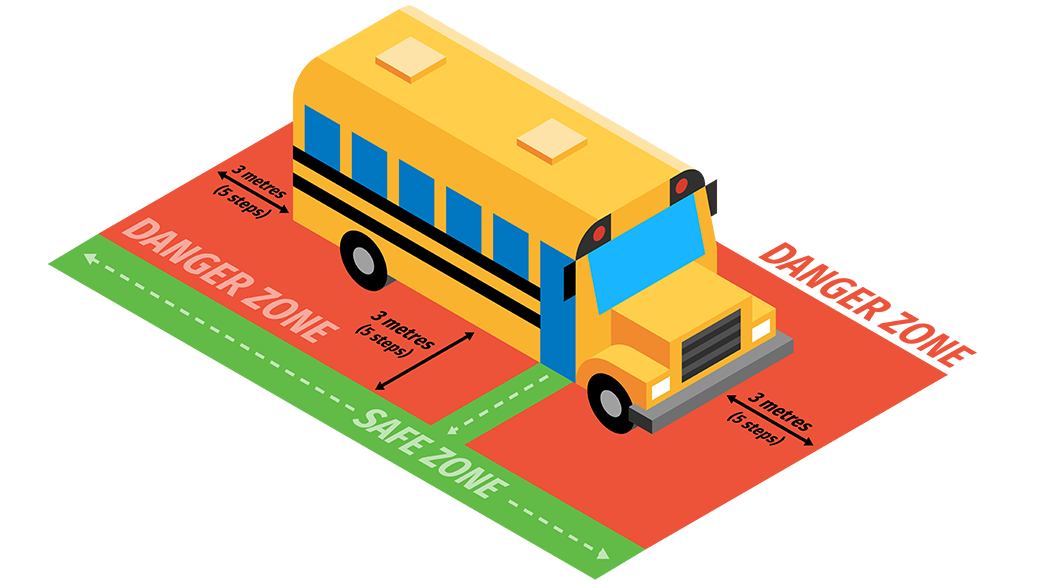Learning to Ride the Bus Safely
Help keep all passengers safe by teaching your child the importance of following pedestrian and bus safety rules at all times.
SCHOOL BUS SAFETY
First Riders
First Riders is a free event for first-time yellow or Edmonton Transit bus riders and their parents. It provides a unique, hands-on opportunity to get comfortable riding the bus before the first day of school.
First Riders is held in late August every year.
Missed the 2023–24 event? Watch our school bus safety video with your child to learn about boarding the bus, danger zones, crosswalks and riding the bus.
Waiting for the yellow bus
When waiting for the yellow bus, students should:
- arrive 5 minutes before the bus pick-up time
- respect private property
- wait quietly for the bus at a safe place away from the road
- wait for the bus to come to a complete stop before lining up to get on
- line up quickly and quietly
- have all belongings ready to be brought into the bus and put away
- avoid the danger zone (three metres in all directions)
Getting on and off the yellow bus
When getting on and off the yellow bus, students should:
- show the bus driver their bus pass
- use the handrail and climb one stair at a time
- tell an adult or the driver if they drop something outside of the bus
- wait until the bus comes to a complete stop before standing up
- only get off through the front door
- take five giant steps away from the bus to get out of the danger zone
Crosswalks, danger zones and blind spots
The danger zone is the three metre area around the yellow bus where the driver cannot see or has limited vision. Students are probably within the danger zone and too close to the bus if they:
- can touch the bus
- cannot see the driver

Signs, road markings and crossing lights make crosswalks the safest way to cross the road, but teach your child to never cross the street in front of a bus. Students using a crosswalk after getting off the bus should:
- avoid the three-metre danger zone around the school bus
- wait for the bus to pull safely away
- walk to the nearest intersection
- wait for vehicles to stop and safely cross the street
If you have concerns about roads, signs or traffic controls, contact Student Transportation.
Yellow bus warning lights and mechanical arms
Traffic laws restrict the use of certain yellow bus warning lights and mechanical stopping arms in cities. There are very few areas in Edmonton where using these devices is allowed by law.
Safety in rural areas
- On designated roads with speed limits of more than 50 kilometers per hour, yellow bus drivers may use the eight-light warning system on the bus to stop traffic when students are getting on or off the bus.
- Students may have to cross at private lanes. Upon the instruction of the bus driver, students should cross in front of the bus at least five meters (15 feet) from the bus.
Riding the bus
When riding the yellow bus, students should:
- stay seated and face forward
- speak quietly and politely
- obey the driver as they would obey the principal
- treat everyone with respect and courtesy
- keep personal items (books, sports equipment, electronics, etc.) in a backpack
- keep body and baggage out of the aisle
- never put any object or body part out of a window
- avoid wearing clothing that could become a hazard, like loose clothes, scarves and drawstrings
- not eat or drink on the bus
- not throw things on the bus or at the bus
School Bus Evacuation Drills
School bus evacuation drills are held to make sure students know how to get off the bus quickly and safely in an emergency. All bus drivers must hold at least two evacuation drills per school year:
- on or before November 30
- on or before April 30
For more information about school bus evacuation drills, contact your child’s school.
